Dr. Williams wants to make sure we “get our money’s worth, beginning on our first real day of touring. We spend quality time at each site, and fit as many sites on our daily schedule as possible. I think the idea is to wear everyone out during the day so that they can sleep at night, but I am still suffering jet lag. Many people in our group are willing to pay the premium rate of at least $3 for small bottle of Coke to obtain the caffeine they need for the day. I am not a caffeine drinker, but headaches due to a lack of sleep is making me go through my pain medication faster than I thought I might. Today we visited the following sites.
 |
| Paul at Beth Shemesh |
Beth Shemesh is the biblical city spoken of in 1 Samuel chapter 6. In battle, the Philistines had captured the Ark of the Covenant, but their war spoils become a curse, as plagues came to each city where the Ark was held. The Philistines placed the Ark, along with some golden offerings, on an unmanned cart pulled by cows, and the cows returned the Ark to Beth Shemesh.
 |
| Beth Shemesh Byzantine ruins |
The exposed ruins are of the Byzantine era, but the more ancient levels of the city lay beneath the tel. The farming plains of the valley run all the way to the Mediterranean Sea coast where the Philistine cities were, and a person looking out from the city of Beth Shemesh would have been able to see the cart carrying the golden Ark of the Covenant rolling through the valley toward their city.
 |
| Paul and Shawn at the Valley of Elah overlook |
The Valley of Elah is the site where Philistines and Israelite armies met for battle, and David battled Goliath. The area is surrounded by foothills, so it is easy to see how ancient armies, who did not have overhead surveillance equipment like airplanes, helicopters, and satellites, would maneuver to try and gain an advantage. The river where David is said to have gathered his five smooth stones runs right through the valley where combat would have taken place.
 |
| Valley of Elah |
 |
| Palace at Lachish |
Lachish was a fortress city that was required to be taken in order to take the capital city of Jerusalem. If it were not taken first, the attacking troops would find themselves pinned between enemy forces if Lachish sent reinforcements to protect Jerusalem. The archeological site has the siege ramparts built by the Assyrians to try and breech the walls, but king Sennacherib of the Assyrians was not able to defeat king Hezekiah of Judah. This city was the first we saw of how a well-fortified city was built. It was built on high ground so that an attacking army could only attack from one direction. A person had to walk clockwise around the city to enter the gate, thus a right handed soldier with his shield on this left arm would be exposed. The city was double walled with two city gates, and the second gate was at a right angle to the first, so even if the first gate was breeched, the attacking soldiers found themselves in a kill box between the gates. However, this is not what killed the Assyrians. They likely had picked up the plague from a rat infestation at a previoius battle. In incubation time of the plague was perfectly timed by God to save his people. The square footage (I intentionally did not say square miles) of the city would only be the equivalent of a couple of modern day city blocks, with the place taking up a significant portion.
The site of Be’er Sheva has been excavated to a point where the entire city layout can be seen. It is here archeologists found a sacrificial altar.
 |
| Altar at Be’er Sheva |
 |
| Be’er Sheva cistern |
 |
| Be’er Sheva ruins |
The city well is just outside the outer city gate, and between the inner and outer gates, what is the kill box zone at Lachish, is large enough to conduct city business at Beer Sheba. Storage rooms are behind the city wall in this courtyard area, making it convenient for commerce. It is easy to see at Beer Sheba how the city is basically the government administration zone for the entire farming area. Imagine if your city hall, mayor’s residence, corp yard, and city water were all together. The residences in the city are about the size of a modern city hall office, but an entire family would be living that space.
This city had a large water cistern which we were able to walk down into and through.
 |
| Fortress at Arad |
 |
| Temple at Arad |
The city of Arad is Canaanite city with a fortress, much larger than Lachish. The interesting feature at Arad is that Jeroboam built a place of worship there so that in the divided kingdom, he could tell his people that they did not need to go to Jerusalem to worship. Although the altar and dimensions of his place of worship at Arad are not built to the specifications of the Law, it still contains the essential elements of an altar, sanctuary, and most holy place.
 |
| Jesus praying at Gethsemane |
The final site of the day was the
Fountain of Tears, an artistic dialogue between the Holocaust and the crucifixion of Jesus by
Rick Weineke. The memorial begins with a statue of Jesus praying at Gethsemane holding the full cup of suffering. The wall contains seven panels, each with a figure of the crucified Jesus as part of the wall, and an accompanying Holocaust figure. The seven panels represent the seven saying of Jesus on the cross, and the six pillars between the panel in which the fountain of tears flow, represent the 6 million Jews that died during the Holocaust.
 |
| “Forgive them for they know not what they do” |
“Forgive them for they know not what they do” Jesus cries out to forgive. For the Holocaust figure, forgiveness is the hardest thing to do.
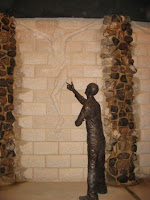 |
| “Today you will be with me in paradise” |
“Today you will be with me in paradise” Jesus says to one thief while the other mocks and curses him. The Holocaust figure is double minded, identifying with both thieves.
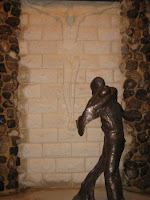 |
| “Behold your mother. Behold your son” |
“Behold your mother. Behold your son” Jesus makes a new relationship between his mother and beloved disciple. The Holocaust figure has a new relationship, carrying the memories of the dead.
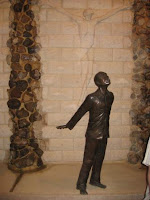 |
| “My God why have you forsaken me” |
“My God why have you forsaken me” Jesus and the Holocaust are the same, alone. Those dying in gas chambers also cried out Psalm 22.
 |
| “I thirst” |
“I thirst” Jesus, the Living Water, is completely poured out. Victims of the Holocaust often died of dehydration. The Holocaust figure identifies with Jesus’ thirst, but does not touch him.
 |
| “It is finished” |
“It is finished” Jesus declares the suffering over. The Holocaust figure cannot see the end to the suffering.
 |
| “Into your hands I commit my spirit” |
“Into your hands I commit my spirit” Jesus commits his spirit to the Father. The Holocaust figure is committed to remembering the dead.
 |
| I Never Saw Another Butterfly (front) |
 |
| I Never Saw Another Butterfly (rear) |
The child in the crematorium on one side reaches out to be connected to the land on the other.
In the final sculpture both figures embrace as they are raised. The cup of suffering is empty. This is a power artistic work where the suffering servants dialogue.
©2011 Paul Tillman

















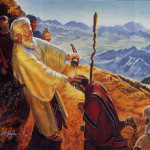



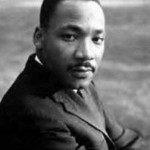
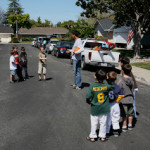
I spent a number of months in the Middle East two years ago studying Biblical lands and I wanted to thank you for your documentation of your tour. I was getting a couple memories mixed up and hadn’t taken the best notes at Beersheba so it was very nice to see what you wrote about Beersheba as well as Lachish in this posting. Thank you, thank you!
I’m glad you were able to find me.